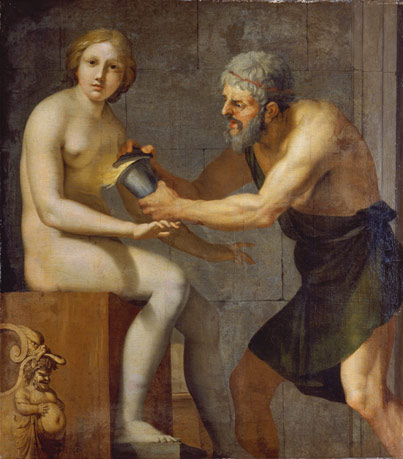Fr : version française / En: english version
Taming fire
The titan Prometheus infused his clay woman with the fire of life through her left breast. He did not stop there as it was Prometheus who brought fire to mankind, paving the way for its mastery and giving humans access to knowledge. Zeus's punishment for this theft would be horrific. He had Prometheus chained to Mount Caucasus so that eagles could eat his liver daily, suggesting that the Greeks knew about the liver's peculiar property of self-regeneration.
Prometheus bound
... And neither may I speak of this my fate,
Nor hold my peace. For I, poor I, through giving
Great gifts to mortal men, am prisoner made
In these fast fetters; yea, in fennel stalk
I snatched the hidden spring of stolen fire,
Which is to men a teacher of all arts,
Their chief resource. And now this penalty
Of that offense I pay, fast riveted
In chains beneath the open firmament.
Ha! ha! What now?
What sound, what odor floats invisibly?
Is it of God or man, or blending both?
And has one come to this remotest rock
To look upon my woes? Or what will he?
Behold me bound, a god to evil doomed,
The foe of Zeus, and held
In hatred by all gods
Who tread the courts of Zeus;
And this for my great love,
Too great, for mortal man.
Alas! Alas! Again I hear the sound of the birds approaching.
The bright air fanned by the subtle beat of wings.
Naught comes to me but fills me with horror and fear!
Excerpt from "Prometheus Bound," drama by Aeschylus, 5th century BC
This foundational Western myth—although myths related to fire are plentiful worldwide—has naturally inspired a great many authors, sculptors, painters, composers and other artists.





























